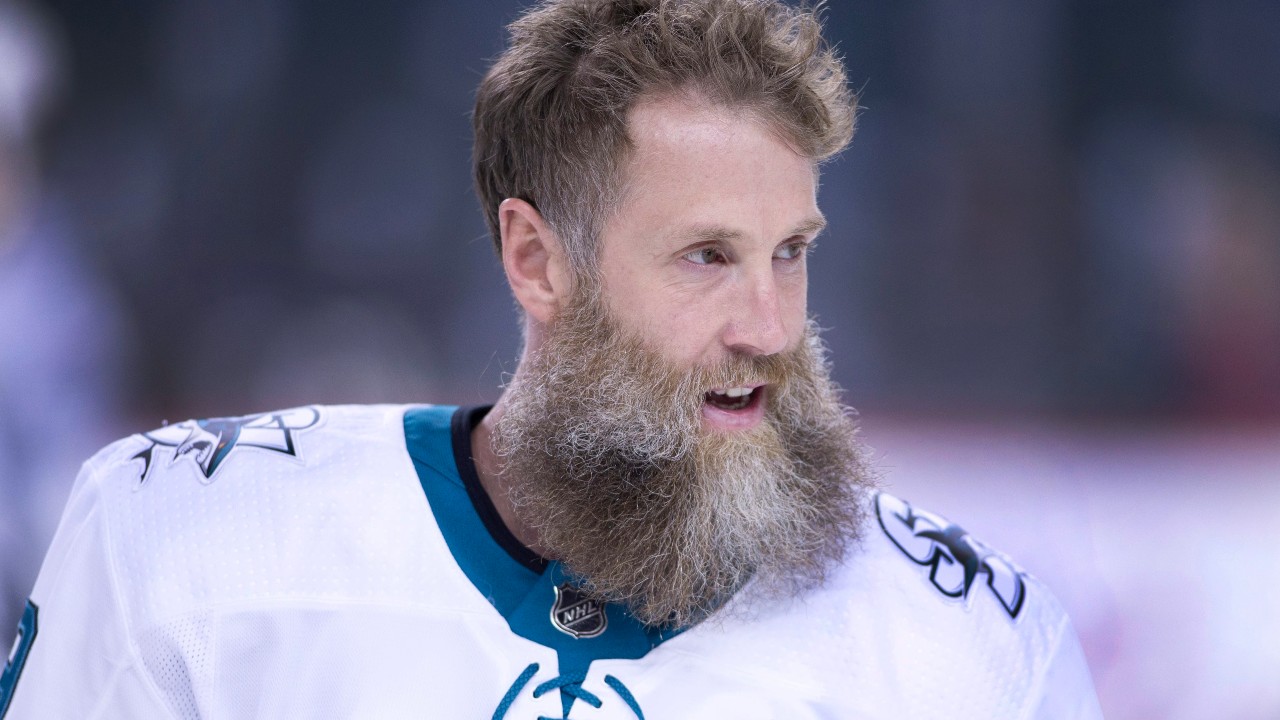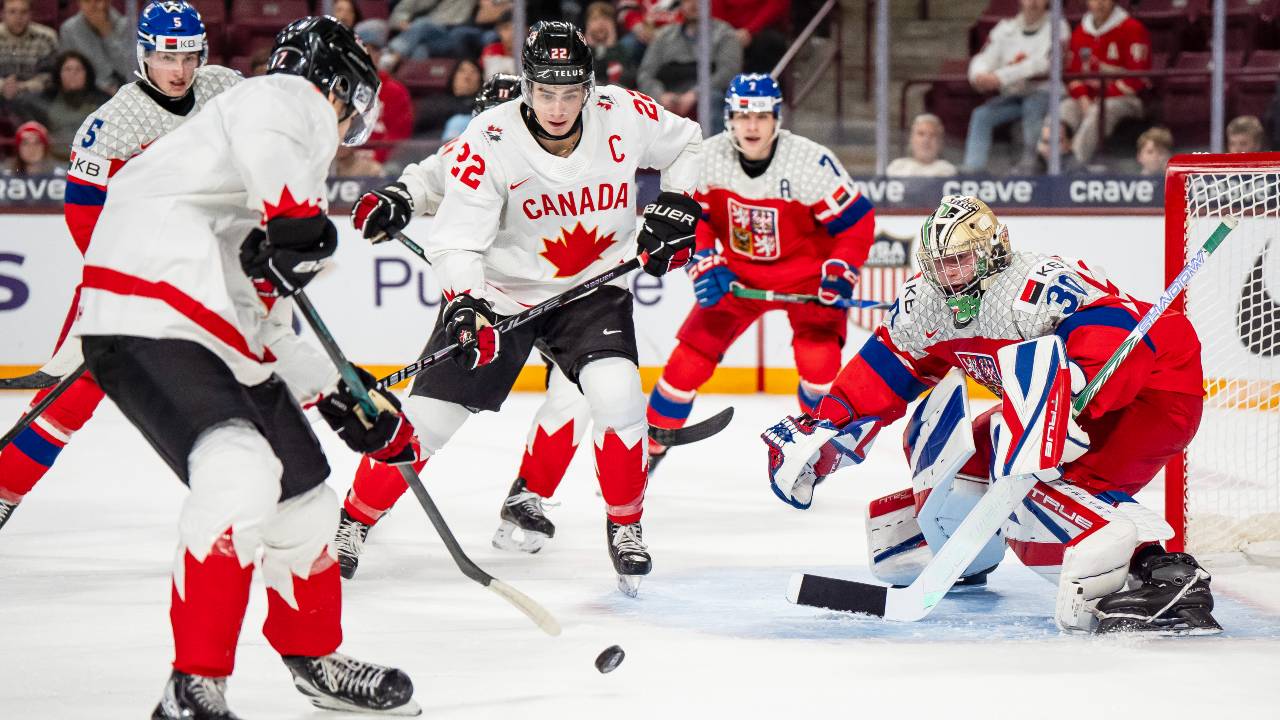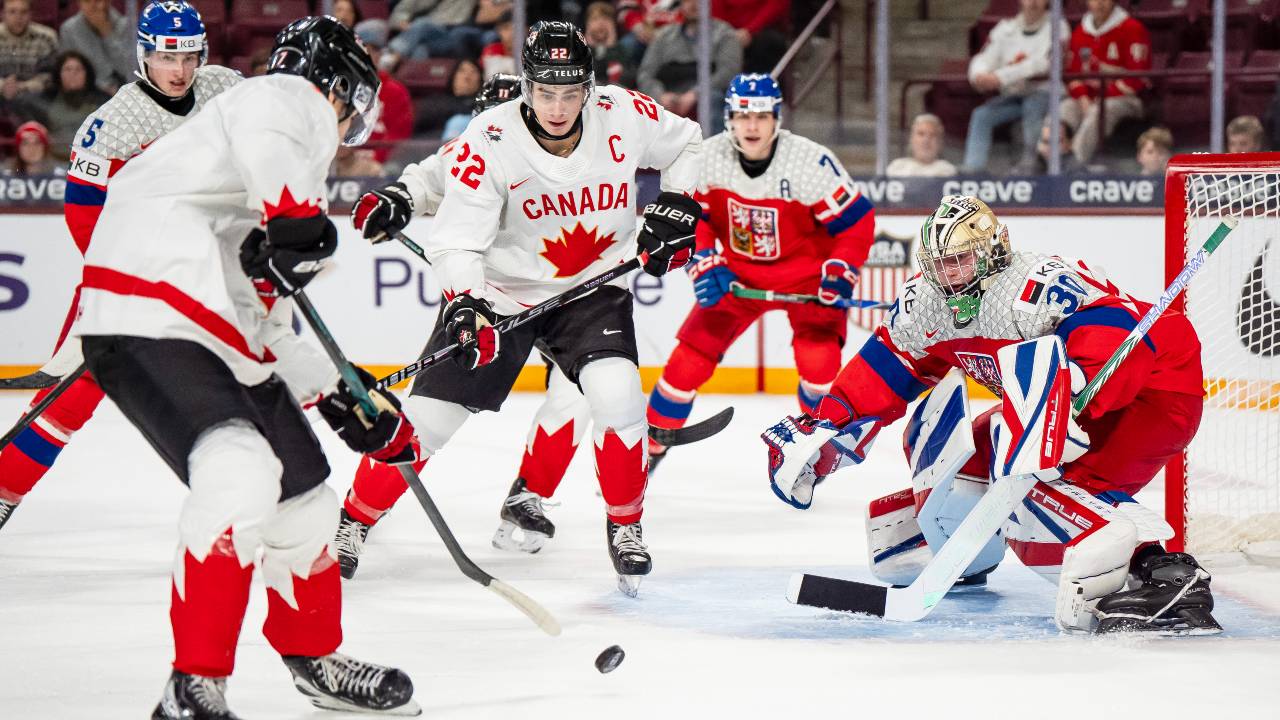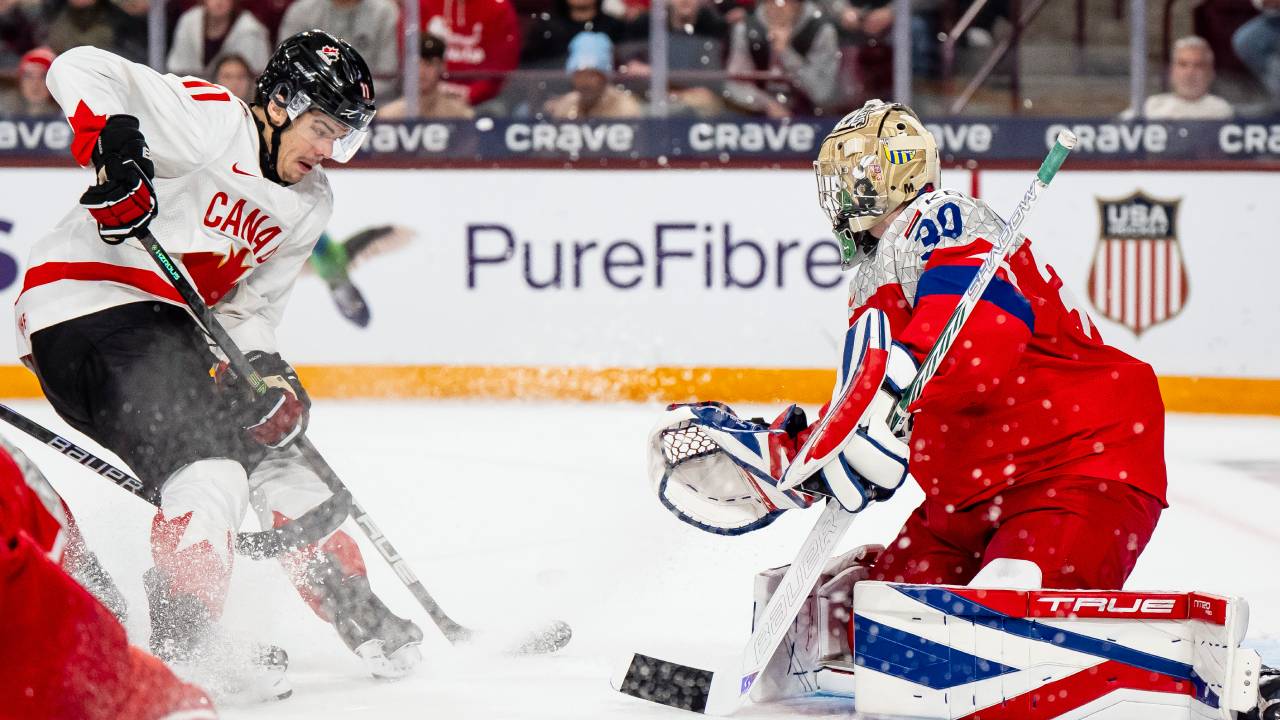
I wonder if, in the history of the NHL, more has ever been said about the signing of a player to a league minimum contract than has been said about Joe Thornton signing with the Toronto Maple Leafs. If an occasion has surpassed this, it can’t have been by much. Granted, it’s only natural given what the team and player have created in terms of potential storylines.
Take a sec to lay it out: An Ontario kid, a first-overall pick, plays 23 seasons and some 1,700 total games between two U.S. cities without ever winning a Cup. He’s a star, he’s famous. He makes all-star teams, and wins Olympic gold, the World Cup and the Hart Trophy as the NHL’s best player. He gets older, he gets grey, he grows increasingly desperate for that Stanley Cup championship.
He goes home. He goes home for (likely) one last kick at the can, right as a talented young team sees its prized core hit its prime age. It’s all so Disney.
You’ll often hear media say they don’t root for players or teams but rather for stories, and if that’s true, there’s gotta be some journalistic types out there right now picking up blue and white pom-poms at their nearest dollar store.
All that’s been written and said about the potential storybook narrative brings me to two important questions that fans will actually want to kick around, which are: Where does Thornton practically fit in the Leafs’ lineup, and (sacrilegious though this is to question) was his signing actually a good use of that bottom-six roster spot? There’s also the question of if it’s even possible to divorce Thornton of All That Is Joe Thornton and just consider his value as a player, so we’ll touch on that, too.
So.
Where does Joe Thornton best fit on this Toronto Maple Leafs team?
The Leafs had a few issues against Columbus in the play-in round, but one was really glaring. Their top two lines were stacked, and therefore supposed to draw the opposing team’s best players, meaning their third line could feast against weaker competition. In reality, they didn’t feast — not at all.
While Kasperi Kapanen and Alex Kerfoot were busy not feasting – fitting for those two to say they were fasting? – they also weren’t providing much else. And because of the type of players they are and what their job was supposed to be (depth scoring), they couldn’t even be used for heavy D-zone starts to prop up the other lines. They had to be protected to do their non-scoring, which is an overall drag on a team given the positions it puts other lines in.
That led to much speculation that this next version of the Leafs would have a bottom six that could at least do other things (defend, hit, wear opponents down) if they weren’t going to produce offence. Which brings me to Thornton and how, if he’s not going to produce offence, I’m not sure he’s going to do much else.
I’m confident he’ll be more willing to hang on to pucks in the offensive zone, control play, and play at the net, but let’s not kid ourselves about what he’s supposed to do. His role will be to help get some offensive punch out of the bottom six, and I’m not overly confident a ton of punch still exists.
I’m also pretty sure he won’t be taking more D-zone starts off the table from the top lines, meaning he may need some protecting himself. So there’s some justifiable grounds in questioning his addition, as has been done by my Hockey Central teammate Brian Burke:
But let’s not overthink this too much. Let’s lay the reality out much more plainly. We’re basically talking about swapping Joe Thornton in for Frederik Gauthier, not Thornton for Kapanen or Andreas Johnsson, as those guys and their dollars went to improve the team’s defensive corps. Thornton can take that spot as a bottom-six centre (call it third-line centre for now), and create some offence at both 5-on-5 and on the second power play unit.
Keep in mind that while Thornton had only 31 points last season, he also had 18 assists at 5-on-5, which if you look at league-wide comparables (names like Jack Eichel, Nicklas Backstrom and Blake Wheeler) was pretty decent. That was all while playing the bulk of his minutes with a pretty meh Marcus Sorensen (18 total points) and Kevin Labanc (33 points).
So he didn’t exactly play with big talent (his minutes away from those two saw him drive play at a much more successful rate), and he also saw his power play assists fall off the map, tallying only five on a quite-bad Sharks special teams unit. It’s tough to play chicken-or-egg with laying fault for his limited power play points, but certainly some of it had to do with an overall bad unit.
It’s not at all unreasonable to think that if the Leafs play him 13 or 14 minutes a game (instead of 15.5 as with San Jose), if he sees power play time with more talented players (almost a certainty), and if he just has a little better luck, his numbers could tick up this season. Whatever mix of linemates he hops the boards with, from Wayne Simmonds to Ilya Mikheyev to Jimmy Vesey to Jason Spezza or whoever, he’ll almost certainly have quality finishers alongside him.
There’s also the matter of what his more reliable presence can do for the rest of the lineup, which includes allowing Kerfoot to play more at wing — where he looked at his best for the Leafs last season. With that, Thornton too can play wing when needed, allowing Sheldon Keefe some versatility not just in-game, but in-season as injuries mount and lineup juggling becomes standard.
I’ve been trying not to, but it’s also tough to not come back to the money in the end. How many minutes or points would constitute value on a league-minimum deal like Thornton’s? Elven or 12 decent minutes a night? Thirty-one points again, over 82 games? If you consider the type of players (usually just-OK prospects) that play for his number, the bar is pretty low.
Let’s go deeper into that part.
Was signing Thornton the best use of a bargain-basement spot on next season’s Leafs?
When looking at the potential UFAs available on Oct. 8, I dedicated a paragraph to some of the bigger names. With Thornton, I hinted at the things I mentioned above – he can still get assists and retains some effectiveness, but I closed with this:
At some point, though, the pace just slows too much, and the “getting some points” thing isn’t enough. If Thornton’s willing to play a minimal role (fourth-line minutes) and play for a fourth-liner’s salary, you could maybe talk me into it (and he is, by all accounts). The hard truth though is that even then, I’d probably prefer to spend the money on some young forechecking machine who can make your team tough to play in other ways.
When I wrote that, I don’t think I considered the idea that he’d play for just $700,000 (I figured $1 million was likely). That changes things. So while I outlined Thornton not being a perfect fit for the changes the team may have wanted to make, we also need to consider the fit of their salary cap, and how his addition may allow the Leafs to keep another valued contributor, someone who may not have been able to stay had the Leafs spent even as much as $1 million on that bottom-six centre spot instead. The fit consideration isn’t purely about his game — it’s the fit of the Leafs puzzle as a whole. When considered like that, Thornton looks like more of a win than just what his on-ice, tangible game will offer.
Speaking of fit, though, how much of his gains will be provided off the ice? I realize this stuff is unquantifiable, but that doesn’t mean it isn’t real.
Is it possible to just consider Thornton for his value as a hockey player in this upcoming season, as we’ve aimed to do above?
I mean, of course not. Where the conversation about the “fit” of Joe Thornton takes me is from the hockey fit, to the money fit, then to the intangibles. The Leafs have dedicated their off-season to finding one thing: hockey obsessives. I thought that was one of the reasons they kept Kerfoot over Johnsson — he’s a serious hockey diehard, extremely passionate about his craft. That was the stated reason they wanted Joey Anderson from the Devils, too – he’s a hardcore, committed, hockey obsessive.
Y’know who else is? Leafs’ rising star Nicholas Robertson. Also motivated? Simmonds, come home to prove his last season was a blip and not the end. Vesey wants to do the same, saying he’s “going to come out with his hair on fire.” Thornton – Cup-chasing and hungry – fits that mold, too, as the type of desperate player the Leafs want to put around their core.
So yes, Thornton fits reasonably well for the Leafs on the ice. But it’s when you pull back that it really makes sense. The core players all finally have their big comfortable contracts, and the last thing they need is for those guys to actually get comfy.
Surrounding them with pros with passion, with veterans like Thornton and Spezza who can serve as examples that nothing is promised, and no single shot at the Cup should be taken for granted, should help get the most of them, too. To me, that fits what the Leafs are chasing here as much as anything else.




